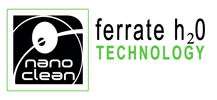FTT has invented a Ferrator® system that can treat the ballast water of ships and kill the aquatic nuisance species that are causing billions of dollars in damage around the world each year.
What is Ballast Water?
Ships contain ballast tanks that store water for weight and balance, as well as stability and structural integrity. When a ship unloads cargo, it fills the ballast tanks with water. When the ship loads cargo, it discharges the water out of the ballast tanks.
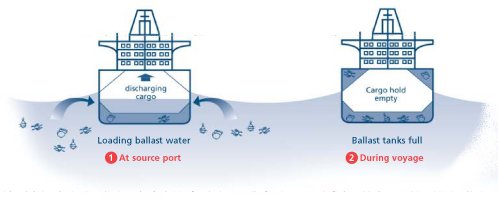
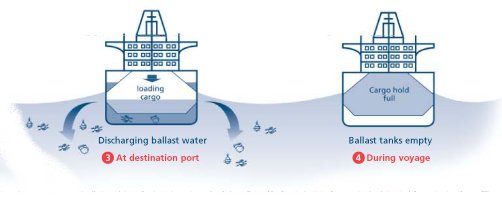
What is the Problem?
Oceans around the world contain many different types of microorganisms, and ships are spreading these various species across the globe through their ballast tanks. For example, a ship that contains water from Singapore travels to Miami and empties its ballast tanks.
Therefore, microorganisms that are normally found in the waters of Southeast Asia are now in the waters of Miami, Florida. Right now the Great Lakes of the Midwest region of the U.S. are in serious trouble due to the introduction of Zebra mussels.
These mussels, which are normally native to Eastern Europe, are consuming a lot of the food supply, which other fish depend on for survival. The introduction of invasive marine species into new environments by ships' ballast water has been identified as one of the greatest threats to the world's oceans.
Proceedings of the Aquatic Invaders of the Delaware Estuary Symposium, Malvern, Pennsylvania, May 20, 2003, pp. 3-5. Dr. David Pimental, College of Agriculture and Life Sciences, Cornell University
"Over fifty thousand species have been introduced in the United States, causing $137 billion in damages each year, shown below:"
| Taxa | Number of Species Introduced |
|---|---|
| Plants | 25,000 |
| Mammals | 20 |
| Birds | 97 |
| Mollusks | 88 |
| Anthropods | 4,500 |
| Microbes | 20,000 |
"Associated damages and costs of controlling aquatic invaders in the United States are estimated to be $9 billion annually, as shown in the following table:"
| Species | Cost |
|---|---|
| Fish | $5.4 billion |
| Zebra and quagga mussels | $1 billion |
| Asiatic clam | $1 billion |
| West Nile Virus (WNV) | $1 billion |
| Aquatic plants | $500 million* |
| Shipworm | $205 million |
| Green Crab | $100 million |
*Cost of mechanical and chemical aquatic weed control ranges from $2,000 to $6,000/hectare/yrs; once established, removal is very difficult.
What is the Answer?
The ballast water needs to be disinfected (i.e. remove the microorganisms) before it is released back into the water.
Up until now, there have not been many effective solutions. In order to be viable, the ballast water treatment solution has to be cost effective, safe, compact, and be able to disinfect the water to an acceptable level. The ballast water Ferrator system achieves all of these goals!
FTT Successfully Proves Ferrate Treatment of Ballast Water Under a NOAA Grant!
FTT demonstrated 100% mortality with respect to total coliform, E. coli, Enterococcus, and zooplankton. An International Maritime Organization (IMO) Treaty requiring ships to be equipped with treatment systems is now addressing this global issue.
Most recently in 2012, a full-scale Ferrate Treatment System was installed on board the U.S. flagged container ship HORIZON PRODUCER. The Ferrator was designed and built to produce enough Ferrate to treat a flow up to 8,000 gpm. It was lowered into the hold by a dock crane, connected to ballast water piping, and was ready to operate within one hour.
During the at-sea trials, unfiltered, treated, water samples were collected at variable Ferrate doses between 1 ppm and 6 ppm. The zooplankton were classified by size as Microplankton (20-200 micrometers), Mesoplankton (0.2-20 millimeters) or Macroplankton (20-200 millimeters) and analyzed to determine viability. Thirty-one species of Holoplankton, and 15 species of Meroplankton were identified and quantified in terms of viability after Ferrate treatment. Average mortality varied from 93% to 100% (compared to 10% for untreated samples) over that dose range.
The disinfection performance on microorganisms was also tested for Escherichia coli, Enterococcus, total coliform, and heterotrophic plate count. 100% mortality was achieved with Ferrate doses between 1 and 4 ppm.
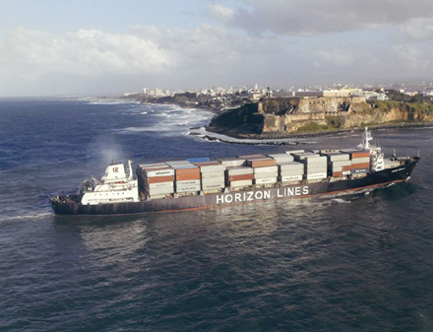
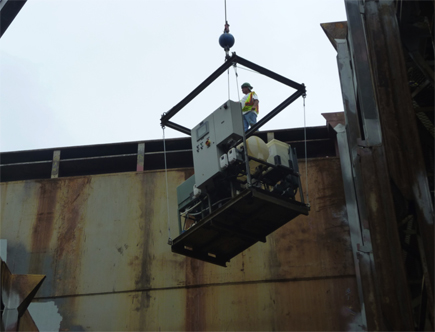
Full-Scale Ferrator Installed On A Ship (Horizon Lines Producer) Under A NOAA Grant
